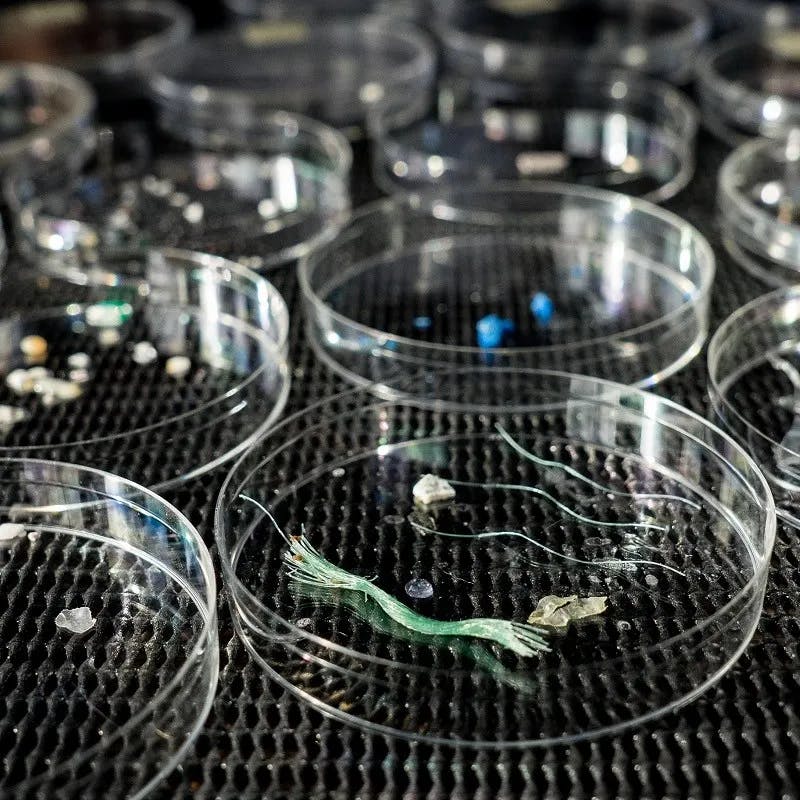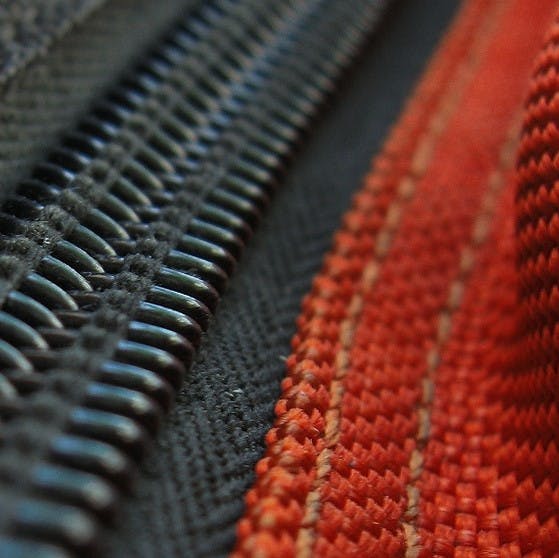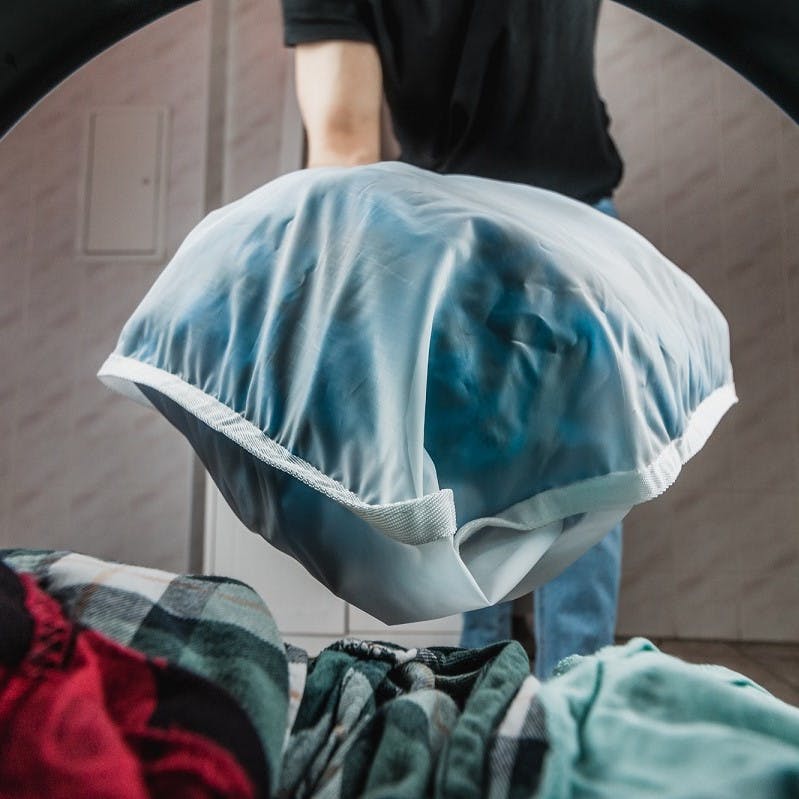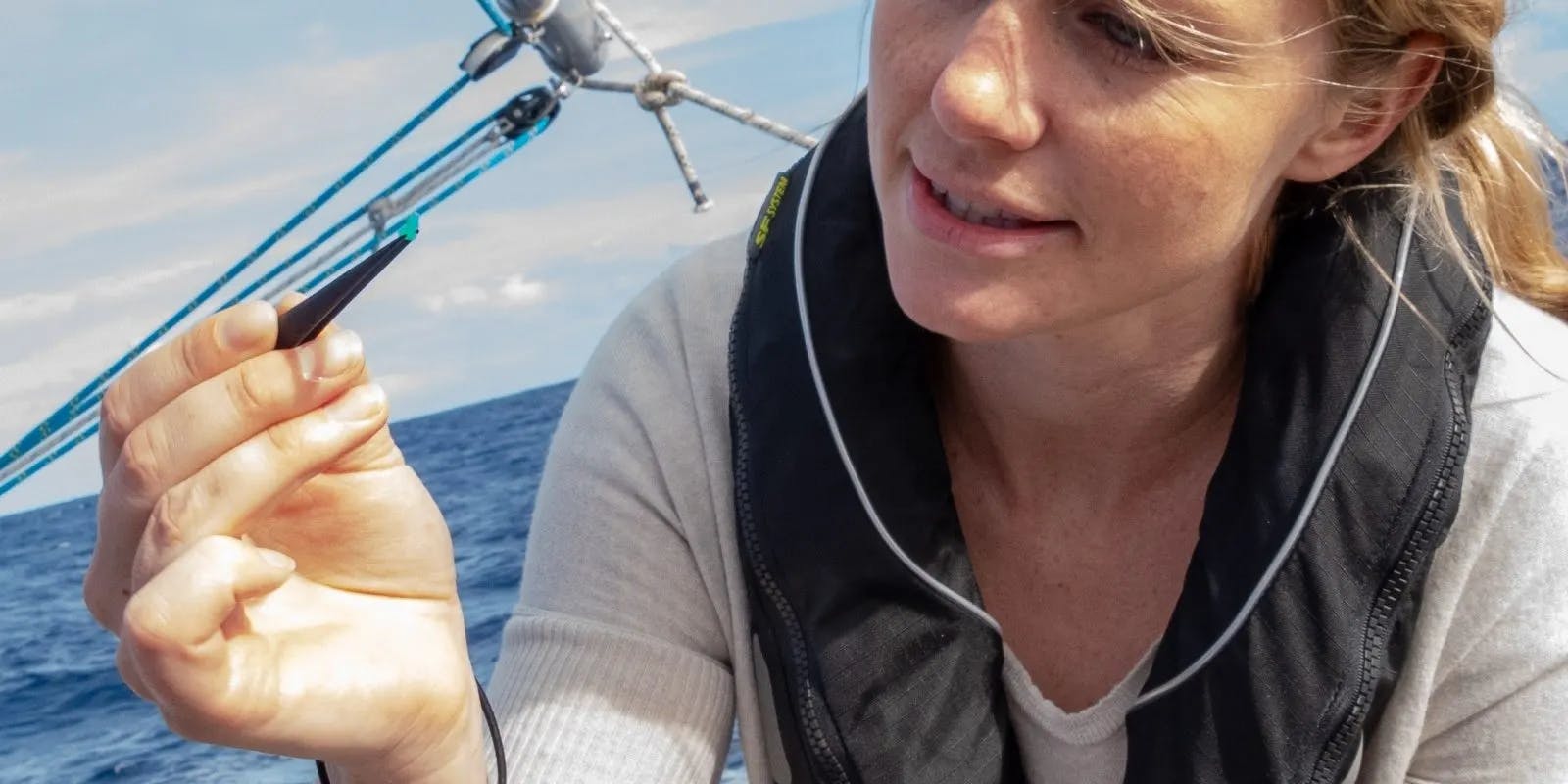
Matt Davies
On November 21st 2018 a sperm whale that washed ashore in Indonesia had 6kg (13 lbs) of plastic waste in its stomach. Items found included 115 drinking cups, four plastic bottles, 25 plastic bags and two flip-flops. – National Geographic
Microfibres: The macro polluters of marine life
Plastic pollution is now one of the largest and most well-known threats to marine ecosystems, but while most of us think of takeaway coffee cups, scientists are increasingly concerned about the microscopic synthetic textiles such as polyester and acrylic that are polluting our oceans.
When washing synthetic clothing, tiny strands: so-called microfibers, thinner than a human hair, are released and find their way into our waterways. – Up to 700,000 fibres can be released in a single domestic wash!
Outdoor clothing brand Patagonia has committed to researching microplastic pollution in the ocean. And, a new study shows that sea anemones - which are close relatives of corals - are eating up these microfibres.

Microplastics in humans too?!
Not only swallowed by sea anemones, these microplastics have even been found in seafood such as mussels that end up on our dinner plates. Moreover, in a recent study, 81% of the 159 samples of tap water from 14 countries, 12 brands of beer, and 12 brands of commercial sea salt, were found to contain microfibres.
Further concern is related to toxic chemicals that attach themselves to/absorbed by microfibres – some of which escaped into our oceans many years ago like DDT (a banned pesticide).


Take action now
Do you want to have a direct impact on climate change? Sir David Attenborough said the best thing we can do is to rewild the planet. So we run reforestation and rewilding programs across the globe to restore wild ecosystems and capture carbon.
Get involvedHow to identify synthetics
60% of clothing includes synthetic fabrics. The most common types of microfibres are nylon, polyester, rayon, acrylic or spandex – everything from running tops to yoga pants and winter fleeces. When shopping for new clothing, check the label for the aforementioned plastics. A good rule of thumb is to shun fast fashion.
Though synonymous with clothing, microfibres and microplastics can also be found in fashion accessories, tablecloths, upholstery, cleaning textiles (cloths and mops), and cleaning products.

Practical solutions to minimise microfibre pollution
Purchase clothes consciously – Check the labels and seek to buy clothes made from natural fibres such as cotton, hemp, linen, and wool. Natural fibres will eventually break down naturally.
Wash existing synthetic clothes less frequently, on a lower temp, and for a shorter duration, which is less aggressive and therefore less likely to shake out plastic fibres.
Consider purchasing a Guppy Friend Wash Bag. In tests, the bag captured 99% of fibres released in the washing process. Or invest in a washing machine lint filter.
Make your voice heard. Sign petitions such as https://act.friendsoftheearth.uk/act/micro-fibres-petition. Contact your favourite clothing companies that are still using synthetic fabrics and ask them to make the change. Or get involved politically, politics and protecting our oceans is directly linked.

Exxpedition - Further research on the extent of microplastic pollution
Mossy Earth Intern Nat Fox joined the Exxpedition Crew researching microplastics, here is what she has to say:
"The world of micro plastics is beginning to seem less tiny and more like a huge problem. After spending 2 weeks sailing across the North Atlantic with eXXpedition, I am only too aware of their existence in the vast waters between Plymouth and The Azores. EXXpedition is a 2 year sailing voyage and part of a global study with The University of Plymouth to collect data on plastic pollution. The focus is learning more about the varying levels of contamination in the different oceanic areas: coastal sediment, surface waters and 25m down in the water column. In the 9 surface water samples we took during Leg 1, microplastics were present in all of them.
Our findings coincided with the knowledge that plastic is evidently everywhere in the ocean - from the freezing arctic to the deepest trenches to the most (seemingly) pristine beaches - but what scientists at The University of Plymouth's Marine Litter Institute are trying to figure out is how did it get there and where does it go after that?
The simple answer is: humans and it never goes "away". Of course, there are many complexities and mysteries surrounding this issue, that once investigated fully, will help to hopefully solve the the puzzle, and the marine crisis we have created."

Sources & further reading

- “The Arctic Ocean as a dead end for floating plastics in the North Atlantic branch of the Thermohaline Circulation” - Science Advances
- “The deep sea is a major sink for microplastic debris” - The Royal Society
 Check clothing labels and source clothes made from natural fibres.
Check clothing labels and source clothes made from natural fibres.